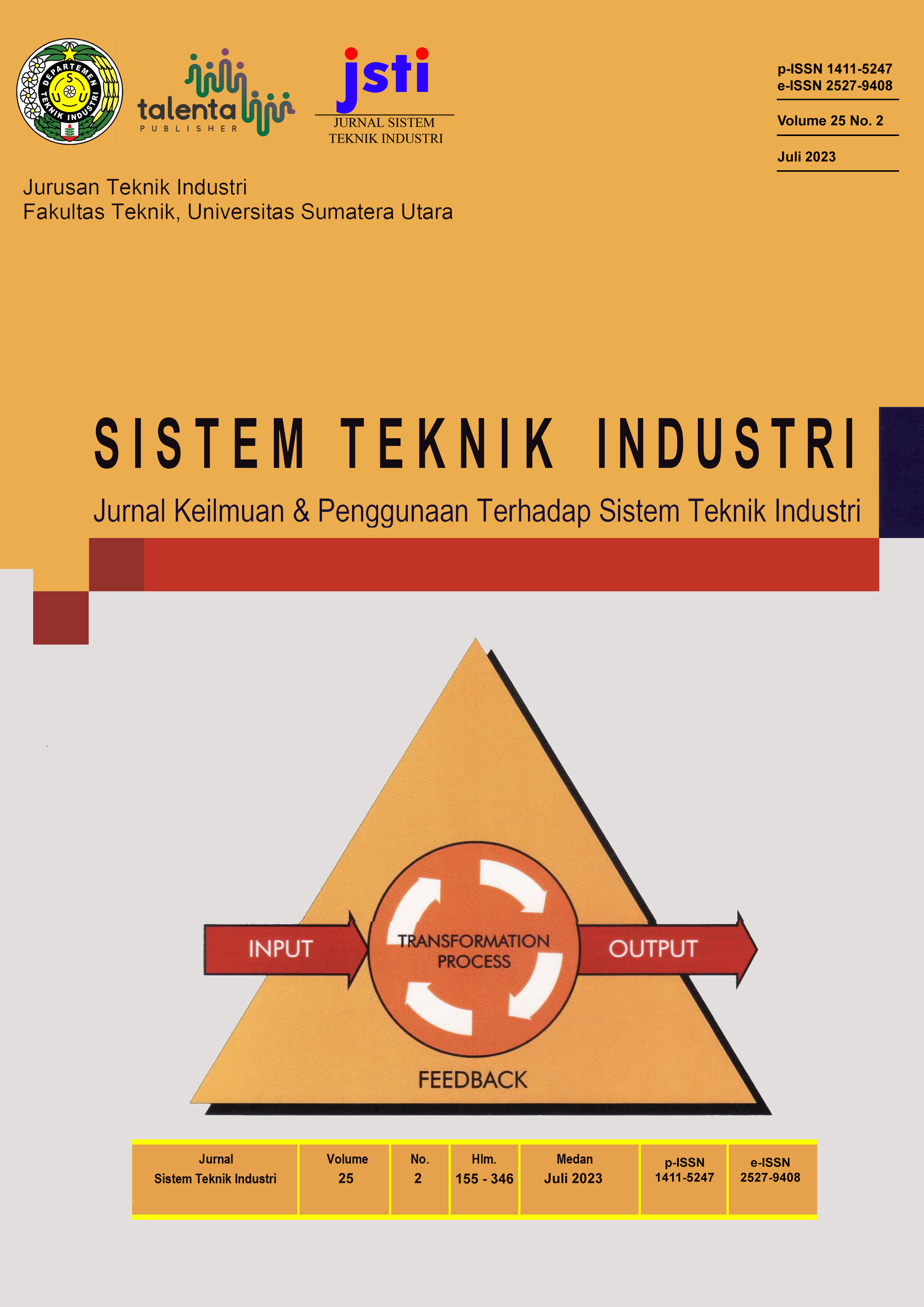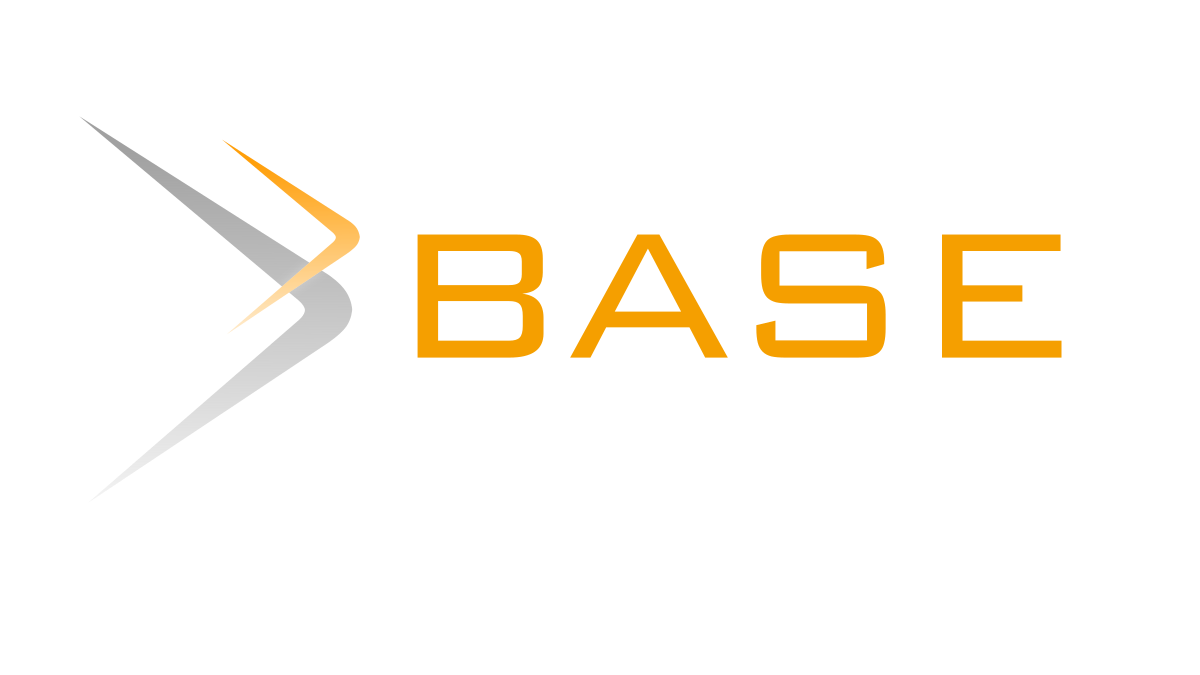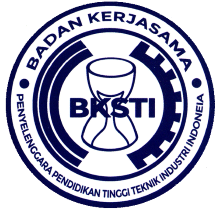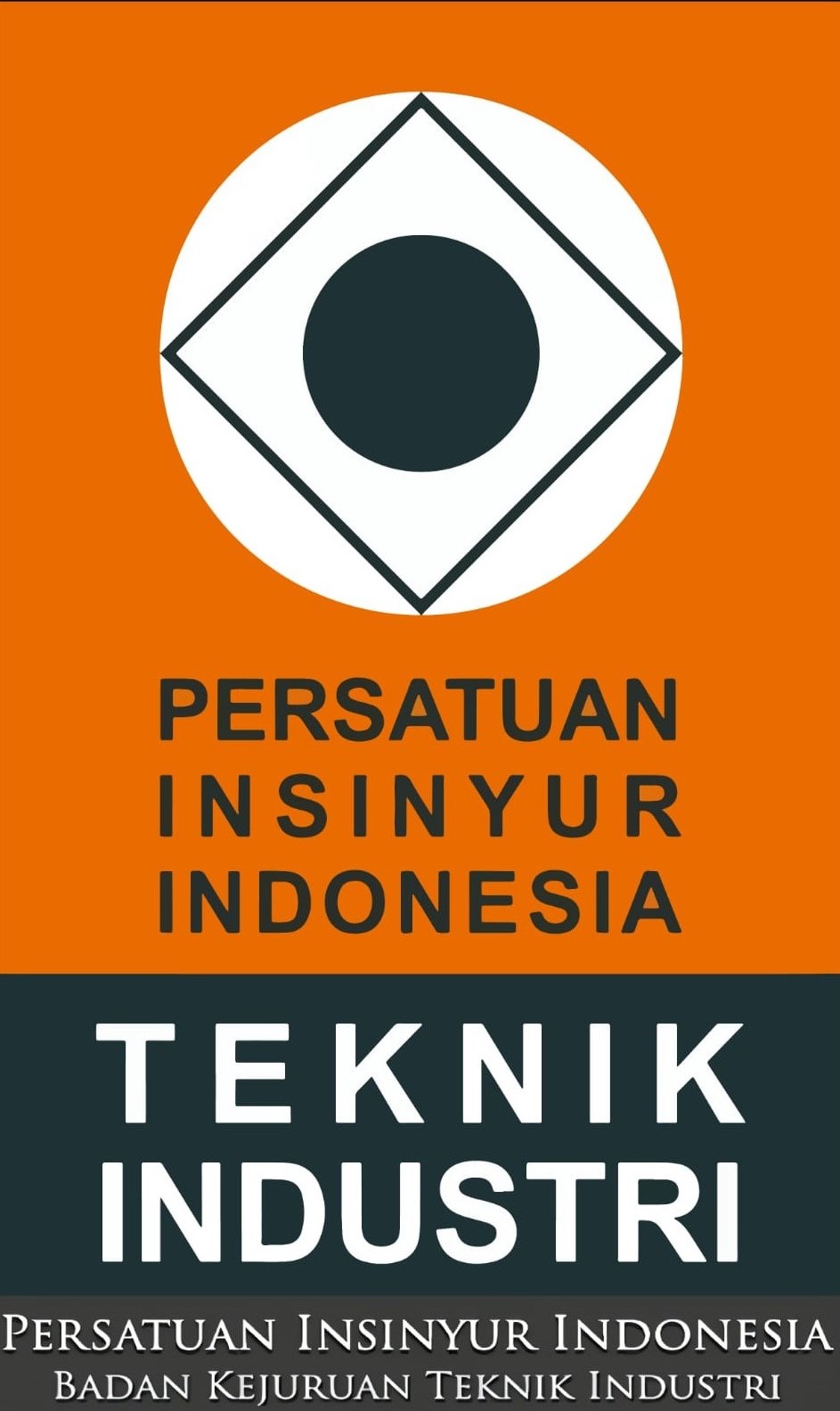Potential Analysis of 3D Printing Products in Surabaya
DOI:
https://doi.org/10.32734/jsti.v25i2.11215Keywords:
3D Printing, Community Knowledge of 3D Printing, Purposive Sampling, Respondents, Potential InvestorsAbstract
The cost reduction and production time reduction are the benefits of 3D printing in the manufacturing industry, which can be developed in printing casual shoes that meet customer needs. Although 3D Printing promises many benefits, many are still doubtful about its application in Indonesia. To examine the potential use of 3D printing in Indonesia, information was extracted about the knowledge of the Indonesian people about 3D printing machines and asking to potential investors for an assessment of 3D printing in Indonesia. Data collection was done through an online survey. Respondents were selected randomly with a purposive sampling technique. Survey results show that 91% of respondents said they already knew 3D printing machines, they also knew that there were various kinds of 3D printing products and various kinds of raw materials that could be used. Prospective investors will assess 3D printing products by taking into account market convenience, product uniqueness, workshop/shop location and availability of specialized human resources.
Downloads
References
L. KubÃ¡Ä and O. Kodym, “The impact of 3D printing technology on supply chain,†MATEC Web Conf., vol. 134, pp. 1–8, 2017, doi: 10.1051/matecconf/201713400027.
O. RodrÃguez-EspÃndola, S. Chowdhury, A. Beltagui, and P. Albores, “The potential of emergent disruptive technologies for humanitarian supply chains: the integration of blockchain, Artificial Intelligence and 3D printing,†Int. J. Prod. Res., vol. 58, no. 15, pp. 4610–4630, 2020, doi: 10.1080/00207543.2020.1761565.
T. Campbell, C. Williams, O. Ivanova, and B. Garrett, “Could 3D Printing Change the World?,†Atl. Counc., p. 16, 2011, [Online]. Available: http://www.atlanticcouncil.org/publications/reports/could-3d-printing-change-the-world.
B. Berman, “3-D printing: The new industrial revolution,†Bus. Horiz., vol. 55, no. 2, pp. 155–162, 2012, doi: 10.1016/j.bushor.2011.11.003.
H. K. Chan, J. Griffin, J. J. Lim, F. Zeng, and A. S. F. Chiu, “The impact of 3D Printing Technology on the supply chain: Manufacturing and legal perspectives,†Int. J. Prod. Econ., vol. 205, no. March, pp. 156–162, 2018, doi: 10.1016/j.ijpe.2018.09.009.
Andreas Wieland’s, “scrmresearch.org,†2014. https://scmresearch.files.wordpress.com/2014/12/3d_printing_supply_chain.png (accessed Jun. 20, 2021).
R. Hakim, I. Saputra, G. P. Utama, and Y. Setyoadi, “Pengaruh Temperatur Nozzle dan Base Plate Pada Material PLA Terhadap Nilai Masa Jenis dan Kekasaran Permukaan Produk Pada Mesin Leapfrog Creatr 3D Printer,†J. Teknol. dan Ris. Terap., vol. 1, no. 1 SE-Research Articles, pp. 1–8, 2019, [Online]. Available: https://jurnal.polibatam.ac.id/index.php/JATRA/article/view/1242.
D. D. Rochman, “Make or Buy: Case Study of 3D Printing Spare Parts Adoption,†Int. J. Psychosoc. Rehabil., vol. 24, no. 02, pp. 2940–2945, 2020, doi: 10.37200/ijpr/v24i2/pr200594.
T. Asmaria et al., “The 3D Printing in Material Research and Medical Physics Education and Its Accuracy Study,†J. Penelit. Pengemb. Pendidik. Fis., vol. 6, no. 2, pp. 227–236, 2020, doi: 10.21009/1.06209.
M. Varsha Shree, V. Dhinakaran, V. Rajkumar, P. M. Bupathi Ram, M. D. Vijayakumar, and T. Sathish, “Effect of 3D printing on supply chain management,†Mater. Today Proc., vol. 21, no. xxxx, pp. 958–963, 2020, doi: 10.1016/j.matpr.2019.09.060.
Z. Liu, M. Zhang, B. Bhandari, and Y. Wang, “3D printing: Printing precision and application in food sector,†Trends Food Sci. Technol., vol. 69, pp. 83–94, 2017, doi: 10.1016/j.tifs.2017.08.018.
C. Press, “SHAPING THE FUTURE OF CHOCOLATE USING 3D PRINTING TO ENABLE PERSONALIZED, ON-DEMAND CONFECTIONERY PRODUCTION.,†Cocoa Press, 2019. https://www.cocoapress.com/about-us (accessed Oct. 25, 2021).
J. M. H. Rahman, M. N. I. Shiblee, K. Ahmed, A. Khosla, M. Kawakami, and H. Furukawa, “Rheological and mechanical properties of edible gel materials for 3D food printing technology,†Heliyon, vol. 6, no. 12, p. e05859, 2020, doi: 10.1016/j.heliyon.2020.e05859.
S. Ishack and S. R. Lipner, “Applications of 3D Printing Technology to Address COVID-19–Related Supply Shortages,†Am. J. Med., vol. 133, no. 7, pp. 771–773, 2020, doi: 10.1016/j.amjmed.2020.04.002.
Q. Yan et al., “A Review of 3D Printing Technology for Medical Applications,†Engineering, vol. 4, no. 5, pp. 729–742, 2018, doi: 10.1016/j.eng.2018.07.021.
M. Kim, S. Kim, and N. Ahn, “Study of rifle maintenance and parts supply via 3D printing technology during wartime,†Procedia Manuf., vol. 39, no. 2019, pp. 1510–1516, 2019, doi: 10.1016/j.promfg.2020.01.297.
S. Pessoa, A. S. Guimarães, S. S. Lucas, and N. Simões, “3D printing in the construction industry - A systematic review of the thermal performance in buildings,†Renew. Sustain. Energy Rev., vol. 141, no. January, 2021, doi: 10.1016/j.rser.2021.110794.
C. R. Associati, “Feel the Peel,†Carlo Ratti Associati, 2019. https://carloratti.com/project/feel-the-peel/ (accessed Oct. 25, 2021).
Carlota, “3D printed shoes: what’s available on the market today?,†3dnatives, 2020. https://www.3dnatives.com/en/3d-printed-shoes-whats-available-on-the-market-today/#! (accessed Feb. 01, 2020).
Alexandrea, “PEAK unveils their first 3D printed basketball shoes,†3dnatives, 2017. https://www.3dnatives.com/en/peak-3d-printed-shoes070920174/ (accessed Feb. 01, 2022).
Ismianti and Herianto, “Framework Prediksi Penggunaan 3D Printing Di Indonesia Pada Tahun 2030,†Semin. Nas. IENACO, vol. ISSN 2337-, no. 2013, pp. 546–553, 2018.
M. Idris, “Perang dan Laris Manisnya Bisnis Senjata,†Kompas.com, 2020. https://money.kompas.com/read/2020/01/08/173200426/perang-dan-laris-manisnya-bisnis-senjata?page=all (accessed Nov. 01, 2022).
B. P. Statistik, “EKSPOR DAN IMPOR,†Badan Pusat Statistik, 2022. https://www.bps.go.id/exim/ (accessed Nov. 01, 2022).
M. Kamali, “Inilah 5 Senjata Buatan Indonesia yang Mendunia,†Sindonews.com, 2022. https://nasional.sindonews.com/read/786997/14/inilah-5-senjata-buatan-indonesia-yang-mendunia-1654196802 (accessed Nov. 01, 2022).
T. L. Saaty, “An Eigenvalue Allocation Model for Prioritization and Planning,†Energy Manag. policy center, Univ. Pennsylvania, vol. 28, p. 31, 1972.
A. Ishizaka and A. Labib, “Analytic Hierarchy Process and Expert Choice: Benefits and limitations,†OR Insight, vol. 22, no. 4, pp. 201–220, 2009, doi: 10.1057/ori.2009.10.
M. Sebastian and K. Omera, " 3D Printing and Its Disruptive Impacts on Supply Chains of the Future,"Technology Innovation Management Review, vol.5, no. 11, pp. 20-25. 2015.
Downloads
Published
How to Cite
Issue
Section
License
Copyright (c) 2023 TALENTA Publisher Universitas Sumatera Utara

This work is licensed under a Creative Commons Attribution-ShareAlike 4.0 International License.
The Authors submitting a manuscript do so on the understanding that if accepted for publication, the copyright of the article shall be assigned to TALENTA Publisher Universitas Sumatera Utara as the publisher of the journal.
Copyright encompasses the rights to reproduce and deliver the article in all forms and media. The reproduction of any part of this journal, its storage in databases, and its transmission by any form or medium will be allowed.



















